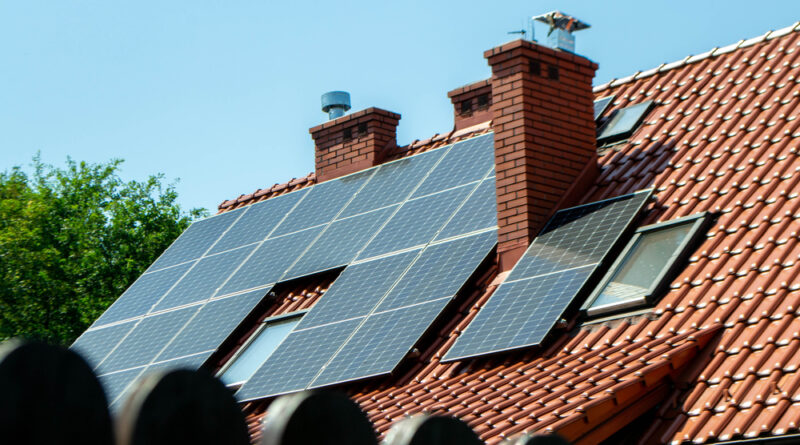Solar water heating systems effectively convert sunlight into heat for your hot water needs while reducing energy bills and environmental impact. These systems can provide up to 80% of your hot water requirements when properly sized and installed. As more homeowners seek sustainable solutions, understanding how solar water heating works and its effectiveness becomes essential for making informed decisions about home energy systems.
Spis treści:
How Solar Water Heating Works
Solar water heating systems use collectors mounted on your roof to absorb sunlight and convert it into heat. The system circulates a heat-transfer fluid (usually water or antifreeze) through these collectors. As sunlight hits the collectors, it heats the fluid inside. This heated fluid then flows to a storage tank, where it transfers its heat to the household water supply through a heat exchanger. The system includes a backup heater for cloudy days or periods of high demand, ensuring you always have hot water available.
System Types and Components
Two main types of solar water heating systems exist: active and passive. Active systems use pumps to circulate water or heat-transfer fluid, while passive systems rely on natural convection. The main components include solar collectors (either flat-plate or evacuated tube), a storage tank, heat exchanger, and control system. Flat-plate collectors consist of an insulated box with a dark absorber plate under glass, while evacuated tube collectors use glass tubes with absorber fins inside. Each type has its advantages depending on your climate and needs.
Efficiency and Cost Savings
A well-designed solar water heating system typically reduces water heating costs by 50-80%. The exact savings depend on several factors, including local sunshine hours, system size, and hot water usage patterns. For example, a family of four in a sunny climate might save $300-600 annually on water heating costs. The initial investment ranges from $3,000 to $10,000, depending on system size and type. With available tax incentives and rebates, many homeowners can recover their investment within 5-10 years through reduced energy bills.
Climate Considerations
Solar water heaters perform effectively in most climates, though system design varies by location. In cold regions, systems use antifreeze solutions and additional insulation to prevent freezing. Sunny climates may allow for simpler, more cost-effective designs. Most locations in the United States receive enough solar radiation to make these systems viable, though optimal performance occurs in areas with abundant direct sunlight. Even cloudy regions like the Pacific Northwest can benefit from solar water heating, though systems there might require larger collectors.
Maintenance Requirements
Solar water heating systems require minimal maintenance but benefit from regular checks. Annual professional inspections help ensure optimal performance and longevity. Homeowners should monitor system pressure gauges monthly and check for any visible damage to collectors or piping. The heat-transfer fluid typically needs replacement every 3-5 years, and pump maintenance may be necessary for active systems. With proper care, these systems can last 20 years or more, making them a durable investment in sustainable home energy.
Environmental Impact
Solar water heating significantly reduces household carbon emissions. A typical system can prevent 1,000 to 2,000 pounds of carbon dioxide emissions annually compared to electric water heating. This reduction equals the environmental benefit of planting 50-100 trees. The systems use renewable energy and have minimal operational environmental impact, though manufacturing and installation processes do create some carbon footprint. The long lifespan and energy savings make solar water heating an environmentally responsible choice for home water heating.
